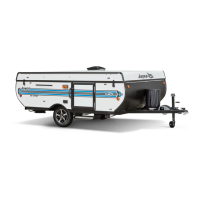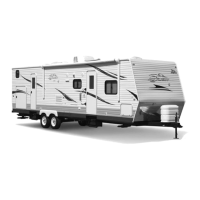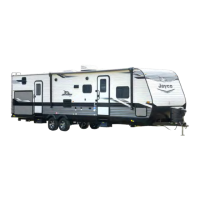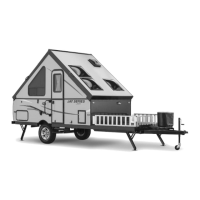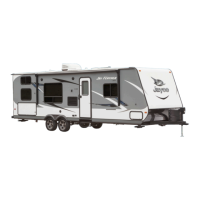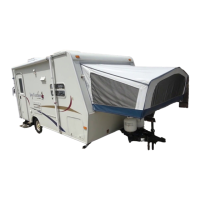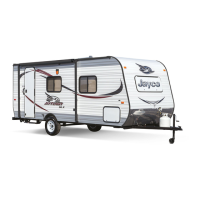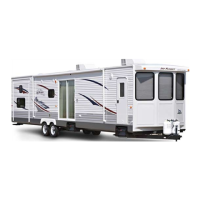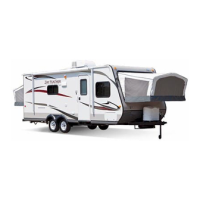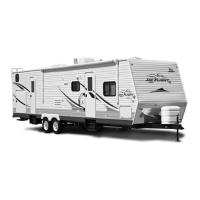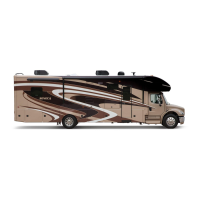1. Each stabilizer jack can be individually
adjusted to stabilize the trailer for use.
2. When setting your RV up on soft ground,
you may wish to place a wood pad or the
equivalent under each stabilizer jack foot.
This will help keep the stabilizer jack from
sinking into the ground.
3. To lower each jack, insert the jack crank
onto the applicable stabilizer jack shaft.
4. Turn the crank clockwise to lower each leg
until it contacts the ground and stabilizes
the trailer.
To raise each jack, insert the jack crank onto
the applicable stabilizer jack shaft and turn the
crank counter-clockwise.
The stabilizer jacks must be fully retracted
before moving or towing the RV to prevent
stabilizer jack damage.
CAMPING TRAILER
HITCHING PROCEDURE
Hooking up a camping trailer is not difficult and
will become easier with practice. The following
procedure will help until you become more
experienced.
1. Make sure the trailer wheels are blocked.
2. Turn the tongue jack crank to raise the
travel trailer tongue above the hitch ball.
3. Open the coupler latch on the travel trailer
hitch.
4. Back the tow vehicle into the proper
position.
5. Turn the tongue jack crank to lower the
coupler onto the hitch ball.
6. Close the coupler latch after it is
completely seated.
7. If so equipped, install the weight
distributing bars (equalizers).
8. Remove the dolly wheel or platform and
retract the tongue jack to its maximum
height.
9. Attach the breakaway switch cable to the
tow vehicle.
10. Attach the safety chains.
11. Plug in your wire harness/connector plug
from the tow vehicle to the travel trailer.
12. Remove the trailer wheel blocks.
TOWING
You will find that your RV will travel safely and
comfortably at most posted trailer highway
speed limits. However, it will take longer than a
passenger automobile to reach that speed.
Keep this in mind when overtaking and
passing another vehicle. Allow more time to go
around the vehicle you are passing. You
cannot cut back into the traffic lane as quickly
due to the longer length of your tow vehicle/RV
combination. Drive with caution to avoid
situations that might require quick momentum
changes.
Even though your RV is equipped with brakes
designed for GVWR, we suggest practicing
stopping away from traffic until you become
accustomed to your RV’s stopping distance. A
good way to practice is at a large parking lot
(where it is permissible). Easing to a stop and
starting smoothly saves wear and tear on your
tow vehicle/RV combination.
Drive defensively, try to anticipate problems
that may occur and prepare for them (even if
61
SECTION 7
TOWING & HANDLING
Your RV braking system is rated for
operation at GVWR not GCWR.
DO NOT travel with waste in the holding
tanks. Liquid or debris in the holding tank(s)
will affect the towing characteristics and
may result in property damage or personal
injury.

